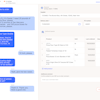
Though the last year has marked a comeback to healthier financial returns and a strong workforce for many businesses, 2023 won’t be without its unique challenges, many of which already experienced in the initial weeks of this year. The foodservice and hospitality industry, for example, is itching to return to a consistent cadence across businesses, while recognizing new solutions are required to meet new demands, environments and opportunities. Meanwhile, many factors continue to persist, such as inflation and supply chain challenges, that threaten progress and are outside of control. Regardless, it is imperative to adjust to support company’s growth.
Foodservice and hospitality providers are in the business of providing superior service and outstanding food to customers, but it’s no simple feat to grow and maintain a roster of clientele. There is a thin line separating the businesses that operate on a transactional basis and those that have a deep understanding of the market, what the customers are seeking, what competitors are offering and a firm grasp on their niche. The goal is to understand clients’ needs and craft solutions to enable them to achieve their objectives, in both cases, better than anyone else can.
The beauty, and crux, of this unique industry is that customers can have vastly different needs depending on their business objectives. Whether the goal is to provide corporate office employees with daily meal options, cater live memorable events, provide compassionate nutrition to seniors and patients or offer students a nutritious, healthy meal, it’s important for a business to deliver a service or product that aligns first and foremost with the client’s goals. Unfortunately, you can’t provide a copy-paste strategy and solution in this line of work. Leaders should work proactively to stay a step ahead, give clients new ideas and share what’s going on in their current market.
1.) Understand your market
Every successful company strikes a balance in meeting the needs and expectations of three key stakeholder which are the client, employee and investor. Within each market, it’s vital to understand that every problem and solution boils down to quality, service and price. Part of a company’s role is identifying how your company serves the unique needs of the stakeholders and proactively solves their problems as a third-party organization. After all, they’re not just looking to outsource their food program, it’s about cultivating a long-term relationship that meets all needs of the organization and those being served.
2.) Understand your customers
In an industry that serves clients which are those who will contract and customers which are those who eat with highly specialized needs, it’s imperative to meet the client where they’re at. The recipe for success is easy just ask, listen, affirm understanding, then share ideas, educate, ideate and innovate. Understanding your clients means being the expert in understanding their situation, then sharing solutions that enable them to achieve their objectives. Add value by educating them on the potential impacts that industry trends can have on their business, and their constituents, such as rising ingredient costs, transportation challenges and the impact food can have on health, well-being and the environment.
Fortunately, we are no strangers to chaos given the last few years. The beauty is that there is always opportunity within chaos, whether it be record-breaking poultry prices or supply chain stoppages. Understanding clients means ideating and innovating new ways to address their needs. For instance, that might mean suggesting a plant-forward menu in the interim that both meets your client’s financial expectations and foodservice needs. Ultimately, your company serves as the leader to combat challenges with your client.
3.) Understand your competitors
Focus on solving problems instead of just trying to build a clientele. You can’t know what you’re up against unless you know what competitors are offering, who their clients are, what they’re good at and specific reasons why those clients chose the competitor. When looking at a market and set of customers, place them in two categories such as baseline service and benefit. Whether it’s feeding nutritious meals to students or offering diverse dining to company employees, companies should evaluate the customer’s specific needs to best support their individual goals. Foodservice hospitality companies should always keep an eye out for evolving industry changes to stay top of mind to potential clients and continue to keep their current roster of clients happy and up to speed.
4.) Understand your niche
Know your uniqueness and how you differentiate in delivering client results. Culture plays a vital role into a company’s unique offering. Leaders should focus on being resourceful, proactive and responsive, especially when problems arise. Be someone the team can count on and trust. Help cultivate a place of work that treats employees well and enables them to thrive professionally. There is unparalleled value in a strong company culture, which translates to the client’s success.
As we accelerate into this year, the power of alignment is so important. Intimately knowing the industry, the players within it and the unique ways you can drive success, these are the pillars all decision makers should be focused on for a professionally and financially fruitful year. By ensuring passionate alignment of this knowledge with your team’s roles and responsibilities, you can achieve success.




















